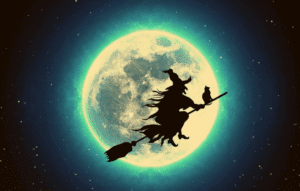This famous quote synthetizes the whole period of Festivity Season, or Christmas Holidays – Feste di Natale e Nuovo Anno- for Italians. The holidays, which are public holidays for school students starting around from 23 December and ending on 8th January depending on the Italian region, include religious and lay festivities, like Christmas’ Eve (Vigilia di Natale) and Christmas (Natale) itself, Santo Stefano (Box Day), New Year’s Eve (San Silvestro, 31st December, or Vigilia di Capodanno), and New Year, or Capodanno (the Head/Start of the Year). A very happy period for Italian children, not going to school, and enjoying family, games, presents and food with their families!

Beautiful Christmas Markets are full of stands with merchandise and goods from Befana, and parents usually buy lots of chocolates, nougats, “canditi”, candies, sweets, together with some sugar fake-charcoal, for their children. The children hang one wool-sock, a big one which can contain many sweets, somewhere in the kitchen, and the Befana will come in the night through the hood (in the past through chimneys) to fill these socks with every delicacy.
The Epiphany, celebrated on 6th January, is the arrival of the “Tre Re Magi”, the Three Wise Men, who brought Gold, Frankincense, and Myrrh, all symbols of Regality, to Baby Jesus. Italians make unique celebrations matching it with the day of the Befana, or witch, basically an old lady who brings charcoal to children who behaved bad during the year, and sweets and candies to children who behaved good. There are a few versions of the legend, or fairy tale, about Befana, and are all associated with the Three Wise Men. The 3 Re Magi asked for hospitality at night knocking at the door of the old lady’s house, during their travel following the comet star directing to them to the birth location of Jesus, the Son of God. The “Befana” was very kind to them. While leaving on the next day, the three Kings from Middle East, Media, and Persia, proposed to her, due to her kindness, to go with them to pay respect all together to the Baby God. However she refused initially as she was very busy. They left, and then she regretted she didn’t join them. She chased after them but never found the way, and still nowadays she is bringing gifts to children, hoping to find and give a present also to that special Baby…

After 6th January children will go to school, the holidays are over. But they, and we adults, are ready for next ones. Remember that Italians are always happy to celebrate parties and festivities, and every time is a good time to have fun for us. So, despite the festivities are gone, we wait for CARNEVALE, Carnival, a period which origins since Ancient Roman Saturnalia, Lupercalia, and other festivities, and in which people like to masquerade, make jokes, and subvert the order of social community sometimes!
Depending on Covid situation and restrictions for its celebration, Carnival is calculated depending on 6 weeks before Easter time, which is also a mobile date celebration, and this year Carnival will start on 24 February with Giovedi’ Grasso, and end 1 March with Martedi’ grasso (Fat Tuesday or Shrovetide), while 2 March will be Mercoledi’ delle Ceneri, Ash Wednesday, also in this case ending all festivities and starting the period of Lent (5 weeks) in preparation to Easter (Sunday 17 April).
Some Italian locations celebrate Carnevale with great events and parades, like in Venice, Viareggio, Ivrea, Milano, Putignano, Acireale, and Fano among the many. Carnevale is also famously celebrated in Europe, like in Spain with Las Palmas, Tenerife, Cadiz, and Barcelona, or in Germany, France, Switzerland, Portugal, Belgium, and Czech Republic, while the most famous out of Europe is without doubt the one in Rio de Janeiro.
We might say that also Singapore celebrates something similar, with the multiethnic parade of Chingay, isn’t it?
